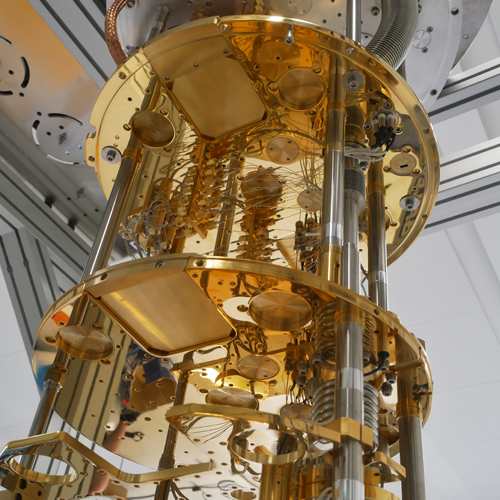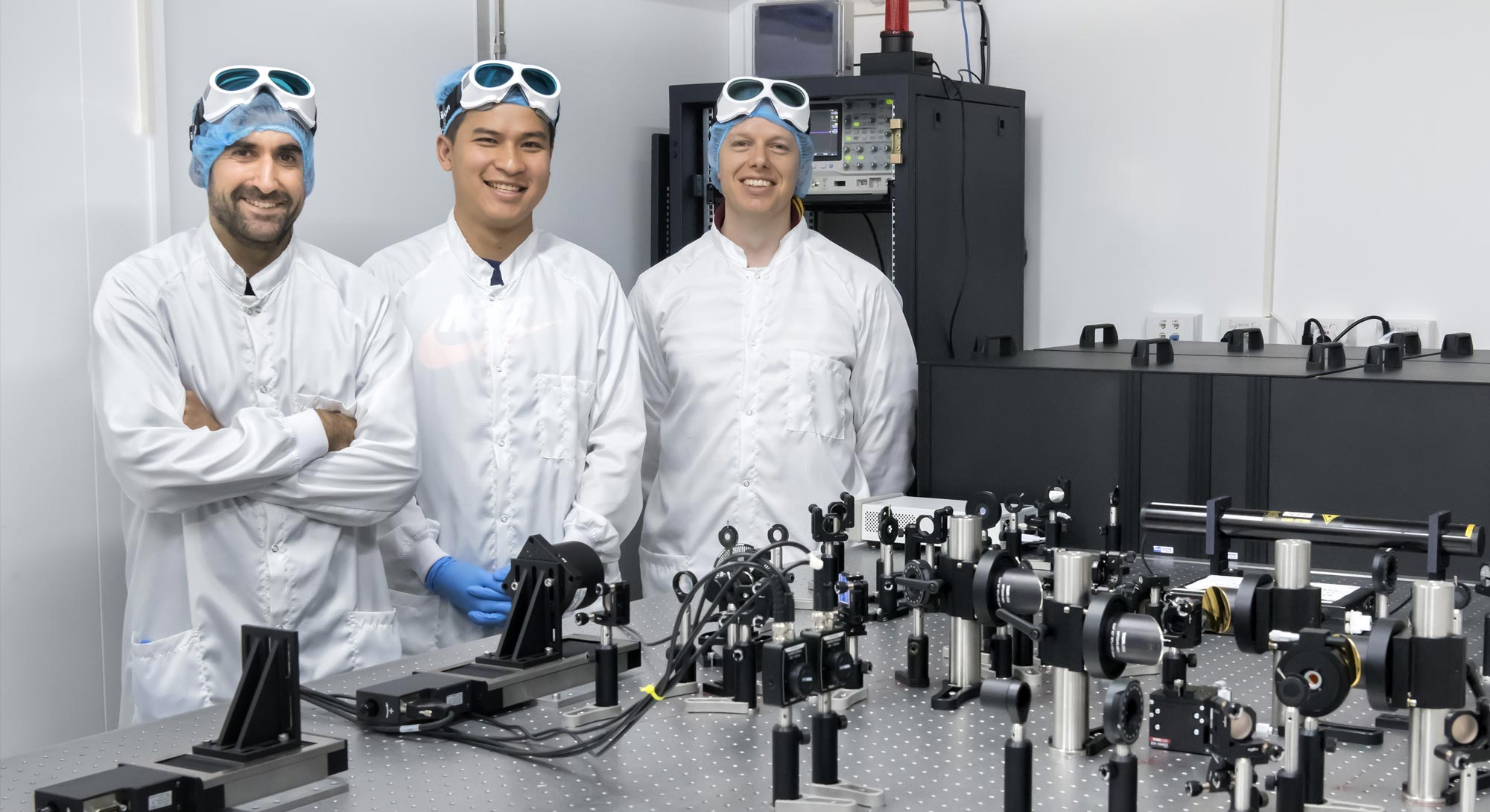Research theme 2
Exciton superfluids

Prof Elena Ostrovskaya
Leader, Research theme 2,
ANU
Research theme 2 highlights FLEET’s collaborative nature, involving cross-disciplinary input between nodes and with several Partner Investigators.
Expertise: non-linear physics, quantum degenerate gases, Bose-Einstein condensates, exciton-polaritons
Research outputs (Elena Ostrovskaya):
130+ papers
4200+ citations
h-index 35 (Scopus)
Read our Case Study
FLEET’s second research theme uses a quantum state known as a superfluid to achieve electrical current flow with minimal wasted dissipation of energy.
In a superfluid, scattering is prohibited by quantum statistics, so electrical current can flow without resistance.
A superfluid is a quantum state in which all particles flow with the same momentum, and no energy is lost to other motion. Particles and quasi-particles, including both excitons and exciton-polaritons, can form a superfluid.
Researchers are seeking to create superfluid flows using three approaches:
- Exciton-polariton bosonic condensation in atomically-thin materials
- Topologically-protected exciton-polariton flow
- Exciton superfluids in twin-layer materials.
If exciton-superfluid devices are to be a viable, low-energy alternative to conventional electronic devices, they must be able to operate at room temperature, without energy-intensive cooling. Thus, FLEET seeks to achieve superfluid flow at room temperature, using atomically-thin semiconductors as the medium for the superfluid.

- Continue working towards superfluid condensation of exciton-polaritons in TMD monolayers at room temperature
- Study multi-body complexes and long-lived dark excitons in TMD monolayers, and explore their potential for superfluid condensation
- Continue to investigate the transition to BCS regime in exciton-polariton systems
- Theoretically explore behaviour of dissipative superfluids in channels.
- Observed room-temperature exciton-polaritons in monolithic optical microcavities with embedded tungsten disulfide (WS2)
- Developed a novel method of protecting WS2 against further material deposition (see case study) while preserving and enhancing optical properties, enabling future embedding of stacked monolayers in microcavities for exciton-polariton condensation
- Observed quantum depletion of an exciton-polariton condensate, identifying features stemming from system’s non-equilibrium nature. Used this system to calibrate exciton-polariton interactions.
- Theoretically showed that stacked atomically-thin (2D) layers of semiconducting TMD materials could support exciton superfluidity at elevated (‘kitchen fridge’) temperatures
- Investigated (theory) interactions between exciton-polaritons in 2D semiconductor layers embedded in a planar microcavity, demonstrating that strong coupling to light enhances the interactions.
Did you know...
A superfluid is a quantum state in which particles flow without encountering any resistance to their motion. Both excitons and exciton-polaritons can flow in a superfluid.
